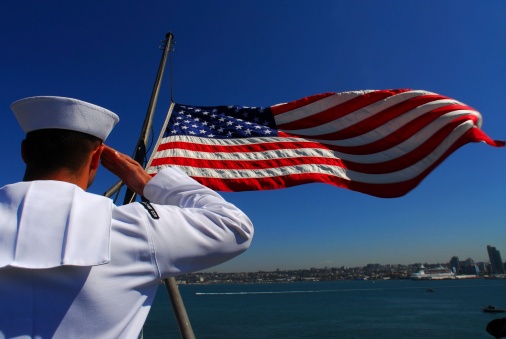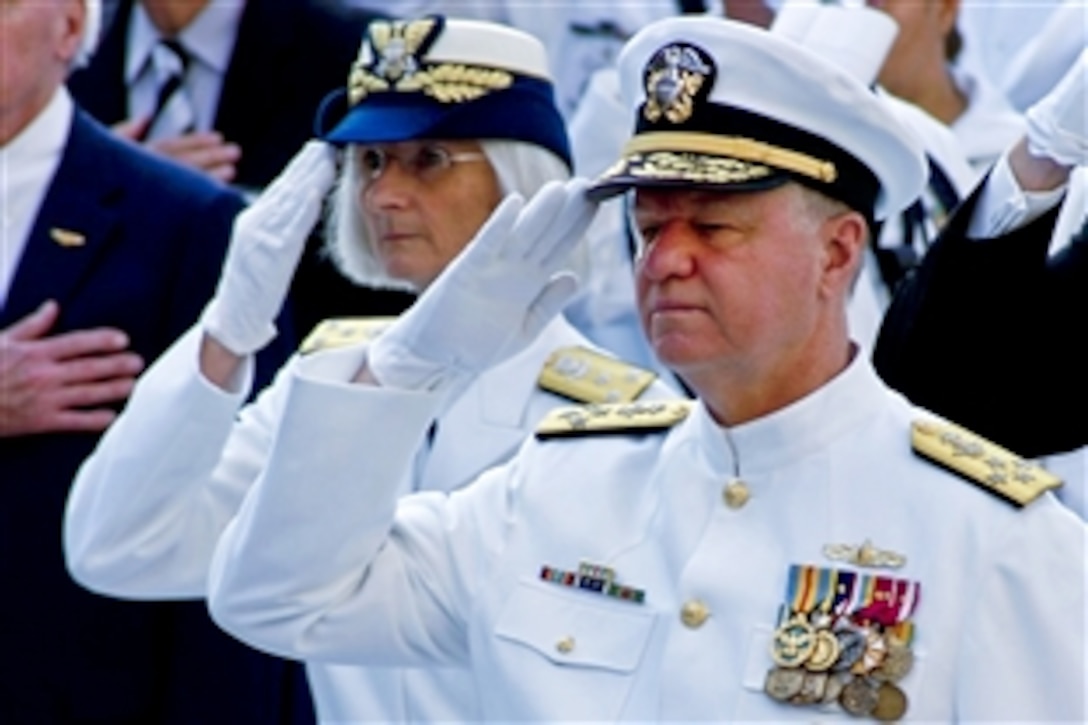

Officially the Tuesday toast is now "our sailors" and the Saturday toast is "our families". In June 2013 the Tuesday and Saturday toasts were officially changed under orders from the Second Sea Lord, Vice-Admiral David Steel, to reflect the fact that women have been at sea in the Royal Navy for nearly two decades. "Our families" (prior to 2013, "Our wives and sweethearts," usually with the reply "May they never meet!") "Ourselves" (usually with the informal reply "for nobody else will concern themselves with our well-being!") The Toasts of the Royal Navy are a set of traditional drinking toasts. The reason that the palm faces in is because sailors' hands were covered in tar from the sheets and rigging and it was considered unseemly to show an officer or a member of the Royal family a dirty palm. This was done by knuckling the forehead and later evolved into the modern Navy salute with the hand at 45 degrees, palm facing in.

When the King or Captain General is being saluted each Officer is to time his salute so as to pull off his hat when the person he salutes is almost opposite him.ĭuring the age of sail, ships' officers were always worried about mutiny and it therefore became custom that whenever an officer approached, the rating would prove that he was not armed.

In a book called New Art of War, printed in 1740, it is stated that Originally subordinates would remove their headgear to a superior. It is also referred to as the Grey Funnel Line: ship owning companies, or lines, painted their steamships' funnels in distinctive colours such as Cunard's red and black or the eponymous Blue Funnel Line, while the Royal Navy's funnels are plain grey. Nicknames for the service include The Andrew or Andrew Miller (of uncertain origin, possibly after a zealous press ganger) and the Senior Service. In total the Royal Navy had 67 ships on display, with the largest ship present being the French carrier Charles De Gaulle at over 200 feet longer than HMS Invincible. The fleet review in 2005 showed the marked contrast between the size of the Navy in 2005 compared to the last review in 1977. For example, at the most recent Review on 28 June 2005 to mark the bi-centenary of the Battle of Trafalgar, 167 ships of the RN, and 30 other nations, were present. The Fleet Review is an irregular tradition of assembling the fleet before the monarch. Ships at sea fly the White Ensign continuously. It may be accompanied by the " Sunset" bugle call. The lowering ceremony is referred to as "Sunset" or "Evening Colours" if sunset occurs after 2100. HM ships, when lying in home ports and roads, are to hoist their colours at 0800 from 15th February to 31st October, inclusive, and at 0900 from 1st November to 14th February inclusive, but when abroad, at 0800 or 0900 as the Commander in Chief shall direct All shore establishments only fly the White Ensign. This is the formal ceremony of raising or lowering of a ship's ensign and jack when in port or at anchor. The Royal Navy uses a number of unique ceremonies which often have their origins in the days of sail. Shore establishments have an offset square design. Originally, different classes of ships had different shapes, but currently all ships and submarines have a circular design.

The Naval Crown adorns the top of all the badges. This was amalgamated in 1983 with the Ships' Names Committee (founded in 1913) to create the Ships' Names and Badges Committee. Soon after his appointment The Ships' Badges Committee was established. The official process for creating the badge was initiated by Charles ffoulkes after World War I who was appointed as the Admiralty Advisor on Heraldry. With the removal of the figurehead, ships badges and mottos were created to graphically represent the ships. Prior to the age of steam ships, ships were identified by their figurehead. The Royal Navy assigns badges to every ship, submarine, squadron and shore establishment.


 0 kommentar(er)
0 kommentar(er)
